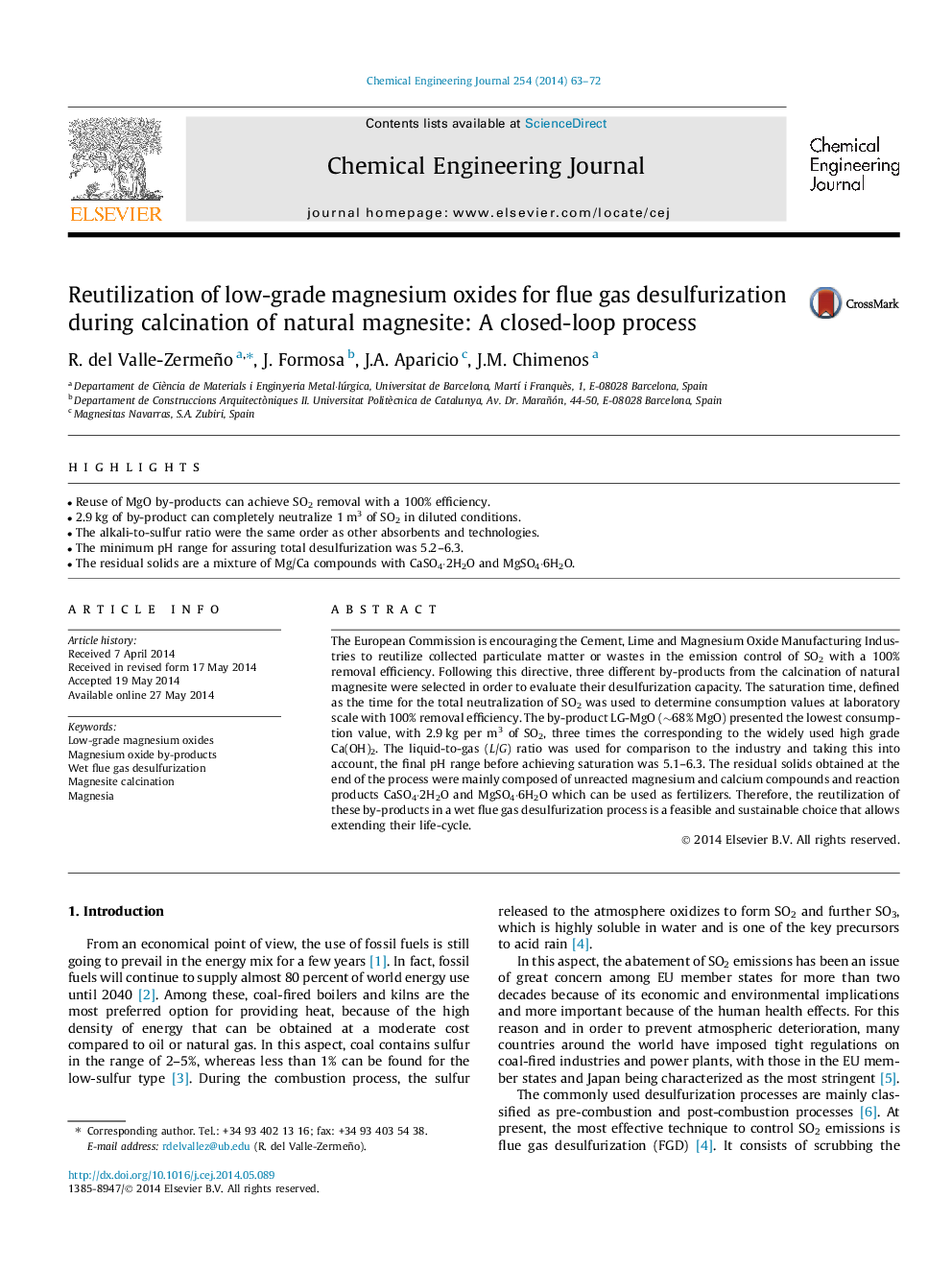| Article ID | Journal | Published Year | Pages | File Type |
|---|---|---|---|---|
| 147238 | Chemical Engineering Journal | 2014 | 10 Pages |
•Reuse of MgO by-products can achieve SO2 removal with a 100% efficiency.•2.9 kg of by-product can completely neutralize 1 m3 of SO2 in diluted conditions.•The alkali-to-sulfur ratio were the same order as other absorbents and technologies.•The minimum pH range for assuring total desulfurization was 5.2–6.3.•The residual solids are a mixture of Mg/Ca compounds with CaSO4·2H2O and MgSO4·6H2O.
The European Commission is encouraging the Cement, Lime and Magnesium Oxide Manufacturing Industries to reutilize collected particulate matter or wastes in the emission control of SO2 with a 100% removal efficiency. Following this directive, three different by-products from the calcination of natural magnesite were selected in order to evaluate their desulfurization capacity. The saturation time, defined as the time for the total neutralization of SO2 was used to determine consumption values at laboratory scale with 100% removal efficiency. The by-product LG-MgO (∼68% MgO) presented the lowest consumption value, with 2.9 kg per m3 of SO2, three times the corresponding to the widely used high grade Ca(OH)2. The liquid-to-gas (L/G) ratio was used for comparison to the industry and taking this into account, the final pH range before achieving saturation was 5.1–6.3. The residual solids obtained at the end of the process were mainly composed of unreacted magnesium and calcium compounds and reaction products CaSO4·2H2O and MgSO4·6H2O which can be used as fertilizers. Therefore, the reutilization of these by-products in a wet flue gas desulfurization process is a feasible and sustainable choice that allows extending their life-cycle.
